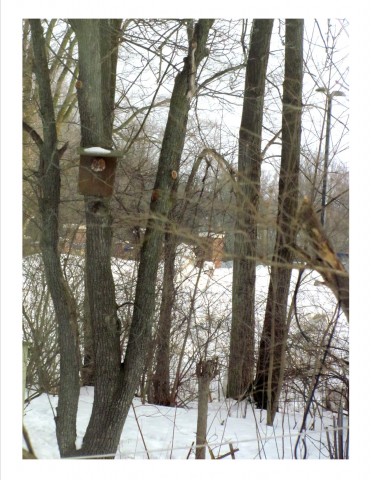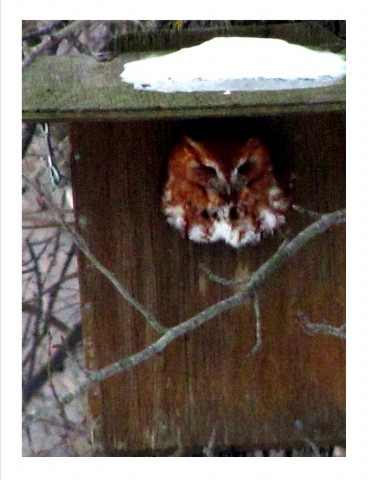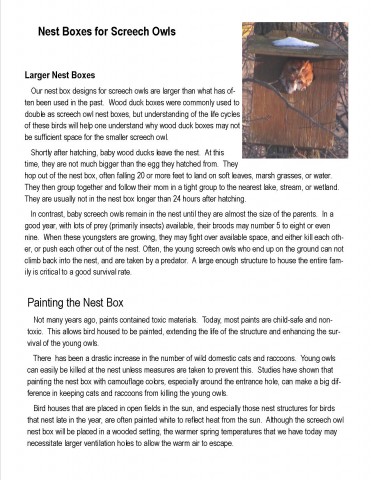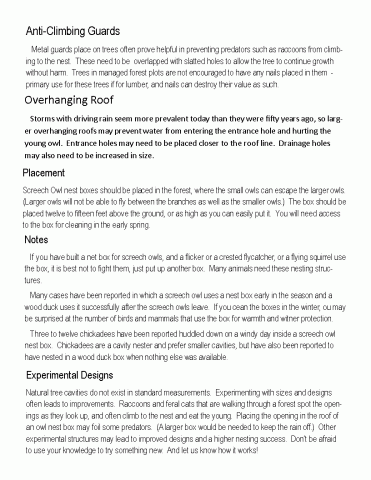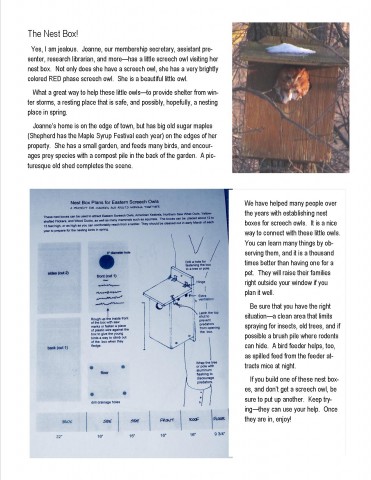HELP FOR WILDLIFE
We can help wild hawks and owls in many ways, and at the same time have the pleasure of seeing them more often; we can watch from a distance (with binoculars) as they go through courtship,raise their families, and teach youngsters to hunt. One of the easiest ways to help these birds is to build nest boxes for the cavity nesting owls and falcons. These homes are usually constructed for Eastern Screech Owls and American Kestrels (a small falcon), but can also be designed for saw whet owls, and barred owls. Platforms and other structures are also useful for some species. To get started, a nest box for either screech owls or kestrels is a very rewarding project. Screech owls can live in small towns and villages where old trees line the city streets, and toxic sprays for insects are kept to a minimum. They will hunt at night in the surrounding woods, and make beautiful trills during spring courtship. American Kestrels often use the same sized box, but will prefer that the box be placed on the edge of an open field where they hunt for grasshoppers and mice.
Nest Boxes:
- This nest box attracted a beautiful red phase screech owl in mid-winter as a safe place from winter storms. CLICK IMAGE TO ENLARGE
- Screech Owl in nest box. CLICK IMAGE TO ENLARGE
- This information will help you get started. CLICK IMAGE TO ENLARGE.
- Nest Box Design for Screech Owls, p2. CLICK IMAGE TO ENLARGE
- It works well to make these nest boxes a little larger -please experiment with the design and let us know how it works! CLICK IMAGE TO ENLARGE
Brush Piles:
